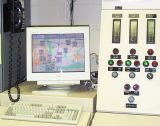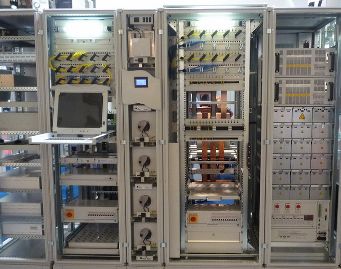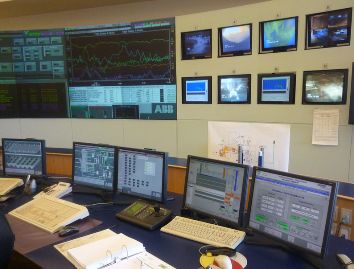SCADA systems in electrical installations
 In electrical installations of all voltage classes, one of the most important issues is control over the equipment's operating mode. The latest developments in this field microprocessor devices allow the creation of full-fledged devices - equipment protection terminals, which in many ways surpass their descendants - electromechanical protection devices.
In electrical installations of all voltage classes, one of the most important issues is control over the equipment's operating mode. The latest developments in this field microprocessor devices allow the creation of full-fledged devices - equipment protection terminals, which in many ways surpass their descendants - electromechanical protection devices.
One of the main advantages of microprocessor terminals is their flexibility. In addition to the basic functions of protection, control and automation, these devices measure the main electrical parameters of the network, keep records of emergency situations in real time.
Each electrical distribution substation has a working diagram that shows a one-line diagram of an electrical installation, as well as the actual position of all switching devices, including earthing. In the case of using microprocessor devices, information about the current wiring diagram can be observed on the LCD displays of the connection protection terminals.All microprocessor devices are connected to an automated dispatch control system, which collects all the necessary information and transmits it to the so-called SCADA system.
The SCADA system is a software and hardware complex, with which it is possible to control the mode of operation of equipment at various sites, including electrical installations.
The monitor of the SCADA-system of an electrical distribution substation shows a one-line diagram of this electrical installation, the actual position of the switching devices, the load of all connections and the voltage values of the substation buses. In case of emergency, the information from the relevant equipment protection terminal is transmitted to the SCADA system. That is, this system integrates all microprocessor devices and collects information about a certain connection. The personnel who maintain this electrical installation, using the SCADA system, control the operation mode of the equipment.
If the maintenance of the daily mnemonic diagram (layout scheme) provides for manual change of the positions of the switching devices, then on the SCADA diagram, the position of the switching devices on the diagram changes automatically after performing a certain switching operation. The only exception is when, for one reason or another, the position signal of the switching device is not transmitted. In this case, the position of the equipment elements on the diagram is changed manually. The same applies to portable grounding, the presence of which on the equipment must also be manually recorded in the SCADA system diagram.
It should be noted that using the SCADA system it is possible to remotely control the connection switches. Usually the SCADA system is connected to the control room. Therefore, the switching devices can be controlled both by the service personnel of this electrical installation and remotely by a dispatcher.

The connection between the control room and the SCADA-systems of substations allows to control the actions of the service personnel during operational switching, which significantly reduces the number of operational errors. In addition, this system allows the dispatcher to promptly detect an emergency situation, as well as to avoid other negative consequences, including spontaneous actions of operating personnel in the substation equipment.
Before issuing permission to allow a team to work on a permit or order for equipment taken out for repair, the duty dispatcher, using the SCADA scheme, can personally check the correctness and sufficiency of the operations carried out with switching devices and grounding devices. In addition, the operating personnel independently checks the actual state of the circuit in accordance with the operations performed. That is, the SCADA system makes it possible to significantly simplify the control over the operation of the equipment and exclude possible operational errors of the personnel that can lead to accidents.
Based on the above, we will highlight the main advantages that arise when using SCADA systems in electrical installations:
-
the possibility of real-time control of the operation mode of the electrical installation equipment, including recording of emergency situations;
-
convenience of monitoring the readings of the main electrical parameters of the network (load and energy consumption of outgoing connections, voltage of distribution buses, values of electrical parameters in the event of an emergency);
-
maintaining a database that allows you to restore all the necessary information for a given time and section of the electrical network;
-
automatic display of the position of the switching devices when performing operations on the equipment;
-
possibility of remote control of keys;
-
the ability to control the actions of operating personnel when performing operational switching, which eliminates the occurrence of negative consequences, including operational errors and accidents.

